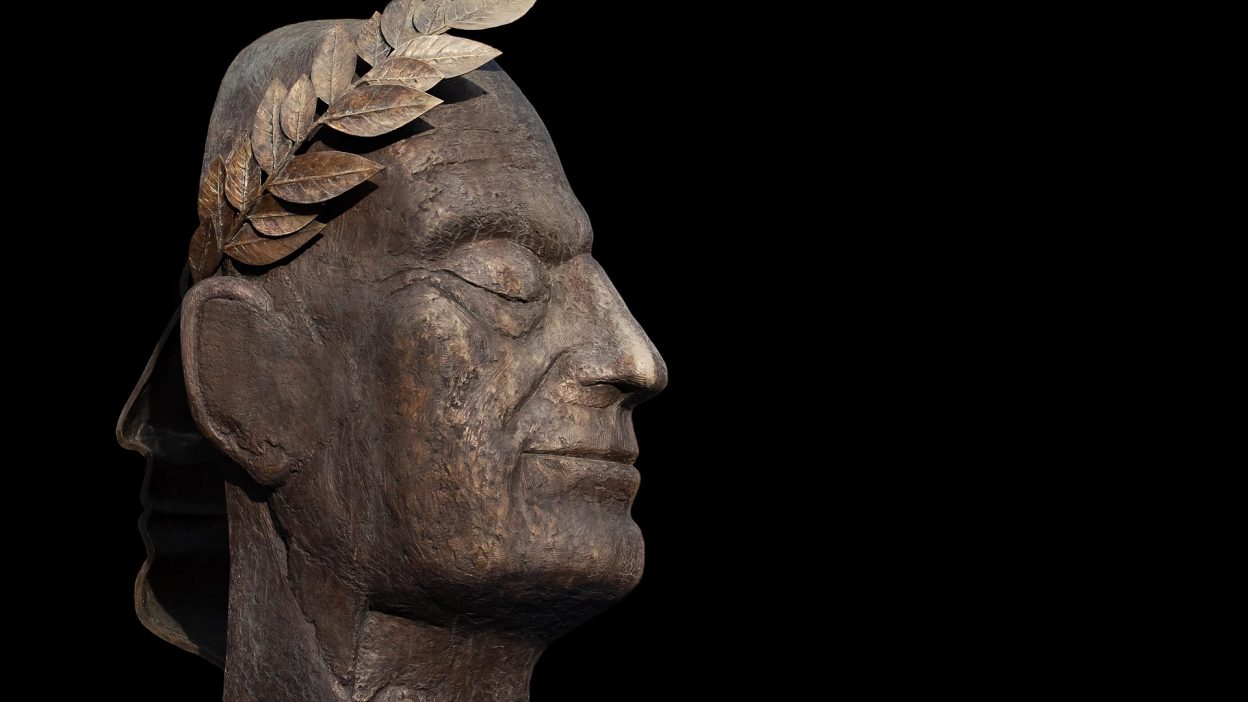The Deadly Epidemic That Shook The Roman Empire To Its Core
1. A Plague Unlike Any Other: How the Antonine Plague Ravaged Rome
The Antonine Plague, also known as the Plague of Galen, erupted in 165 AD and persisted for nearly 15 years, wreaking havoc across the Roman Empire. Believed to have been either smallpox or measles, this epidemic struck at the height of Roman dominance, exposing vulnerabilities in one of the world’s most formidable civilisations.
The plague is thought to have originated in the Near East, brought back by Roman soldiers returning from military campaigns. As it spread, it decimated entire communities, crippling both economic productivity and military strength. Unlike previous outbreaks, this disease exhibited an unprecedented fatality rate, killing not just the common folk but also Roman aristocrats and leaders.
2. The Emperor’s Nightmare: How the Plague Impacted Roman Society and Leadership
At the time of the outbreak, Emperor Marcus Aurelius ruled the empire. Renowned for his wisdom and philosophical writings, he now faced a crisis that would shake his reign. With a rapidly dwindling population, Rome’s military, economy, and administration suffered immense setbacks.
The most alarming impact was on the Roman legions. With so many soldiers succumbing to the disease, Rome’s once-mighty army struggled to maintain its territorial grip. Cities that once thrived on commerce and agriculture fell into economic stagnation, with trade routes disrupted and farmland abandoned due to the loss of labourers.
The Antonine Plague also took a psychological toll on Roman society. As people fled urban centres, abandoned their sick, and lived in constant fear, the empire witnessed a shift in religious and social structures. Traditional pagan beliefs were questioned, and alternative faiths, including Christianity, began gaining traction among those searching for solace amidst the devastation.
3. The Grim Toll: Deaths, Statistics, and the Unimaginable Scale of the Epidemic
- Death Toll: Historians estimate that between 5 and 10 million people perished due to the Antonine Plague, approximately 10% of the empire’s population.
- Mortality Rate: Some regions saw death rates as high as 25-30%, particularly in densely populated cities like Rome, Alexandria, and Antioch.
- Military Losses: Roman legions suffered devastating losses, with entire battalions wiped out. Military campaigns stalled, leading to border insecurities and external threats.
- Daily Deaths: At its peak, the plague claimed up to 2,000 lives per day in Rome alone.
- Economic Collapse: The Roman economy spiralled into a severe recession, with industries such as farming, trade, and craftsmanship facing near-total collapse.
4. How the Plague Spread: The Role of War, Trade, and Human Movement
The Antonine Plague’s rapid spread can be attributed to military campaigns, trade routes, and dense urban populations. Roman soldiers, returning from battles in the Parthian Empire, unknowingly carried the disease back to their home territories. Military encampments became hotspots of infection, where poor hygiene and overcrowding accelerated transmission.
Trade routes also played a crucial role. Rome’s extensive commercial networks connected Europe, Africa, and Asia, allowing the pathogen to travel freely via merchant ships, caravans, and bustling marketplaces. The movement of enslaved people further contributed to the disease’s spread, as infected individuals were transported across provinces.
5. Symptoms and the Horrors of the Antonine Plague
Accounts from the famous physician Galen, who documented the epidemic, describe symptoms strikingly similar to smallpox:
- Fever and chills, often leading to severe dehydration
- Rashes and pustules that covered the entire body
- Diarrhoea and vomiting, causing extreme weakness
- Sore throat and coughing, leading to respiratory distress
- Blindness in some cases due to severe infection
The sheer severity and quick onset of symptoms meant many individuals succumbed within days, leaving families, communities, and even entire cities overwhelmed by the sheer volume of the dead.
6. The Empire’s Response: How Rome Tried to Combat the Plague
The Roman government, unprepared for a catastrophe of this magnitude, struggled to implement effective containment measures. Emperor Marcus Aurelius launched public health campaigns, including:
- The construction of makeshift hospitals in major cities.
- Distribution of herbal remedies and medical guidance from Galen and other physicians.
- Large-scale burials and mass cremations to control the spread of infection.
- Imposing temporary quarantines on affected regions.
Despite these efforts, the absence of scientific knowledge about viruses meant that Rome’s attempts to contain the plague were largely ineffective. The lack of hygiene and reliance on superstition only worsened the situation.
7. Economic Consequences: How the Plague Weakened Rome
- Decline in Tax Revenue: The mass deaths led to severe labour shortages, reducing agricultural and industrial productivity.
- Inflation: With fewer workers, the cost of goods skyrocketed, leading to economic instability.
- Military Setbacks: The empire could no longer sustain large armies, leading to territorial losses.
- Social Unrest: The economic hardships triggered riots, uprisings, and political instability.
- Religious Shifts: As traditional Roman deities failed to offer protection, many turned towards new religions, including Christianity.
8. The Antonine Plague vs Other Historic Pandemics: A Comparison
While the Antonine Plague was devastating, it was not the only epidemic to reshape history. Other major plagues include:
- The Black Death (1347-1351): Killed nearly 50 million people in Europe alone.
- The Justinian Plague (541-542): Thought to have wiped out half of the Byzantine Empire’s population.
- The Spanish Flu (1918-1919): A modern pandemic that infected 500 million people worldwide.
Unlike these later pandemics, the Antonine Plague struck an empire at its height, contributing to the slow decline of Rome over the following centuries.
9. A Legacy of Disease: How the Antonine Plague Changed History
The long-term consequences of the Antonine Plague were profound. With a crippled economy, weakened military, and shattered public confidence, Rome was never the same. The disease exposed the empire’s vulnerabilities, paving the way for future crises.
Historians argue that the Antonine Plague was an early sign of Rome’s decline, setting the stage for the eventual fall of the Western Roman Empire centuries later. It also reshaped medical knowledge, as physicians like Galen documented their observations, influencing future generations of doctors.
10. Final Thoughts: Could History Repeat Itself?
The Antonine Plague serves as a stark reminder of how pandemics can alter the course of history. In today’s world, where globalisation has interconnected societies more than ever, the lessons of the past remain crucial.
With modern medicine, we now have tools to fight diseases, but the social, economic, and psychological impacts of pandemics remain strikingly similar. The question is—are we truly prepared for the next global health catastrophe?
FAQs
1. What was the Antonine Plague? The Antonine Plague was a deadly pandemic that struck the Roman Empire in 165 AD, likely caused by smallpox or measles.
2. How many people died from the Antonine Plague? Estimates suggest between 5 and 10 million deaths, roughly 10% of the empire’s population.
3. Who was the Roman emperor during the Antonine Plague? Marcus Aurelius, the Stoic philosopher-king, ruled during the pandemic.
4. How did the Antonine Plague affect Rome? It crippled the military, devastated the economy, and weakened Rome’s political stability.
5. Did the Antonine Plague contribute to the fall of Rome? While not the sole cause, it significantly weakened Rome, paving the way for future crises.




